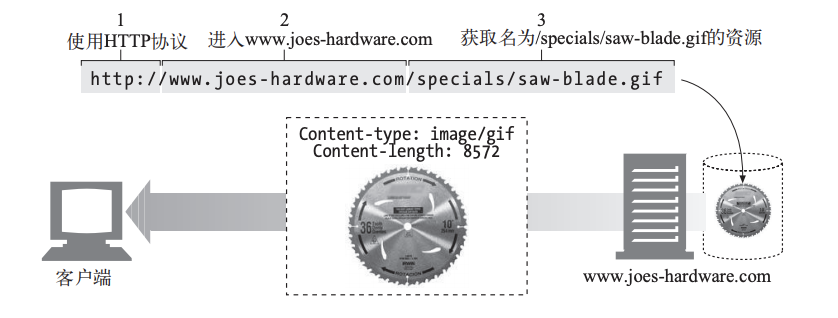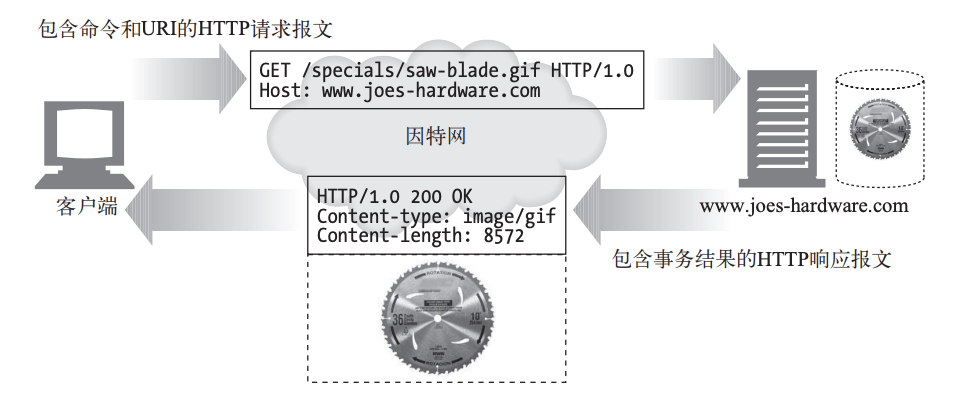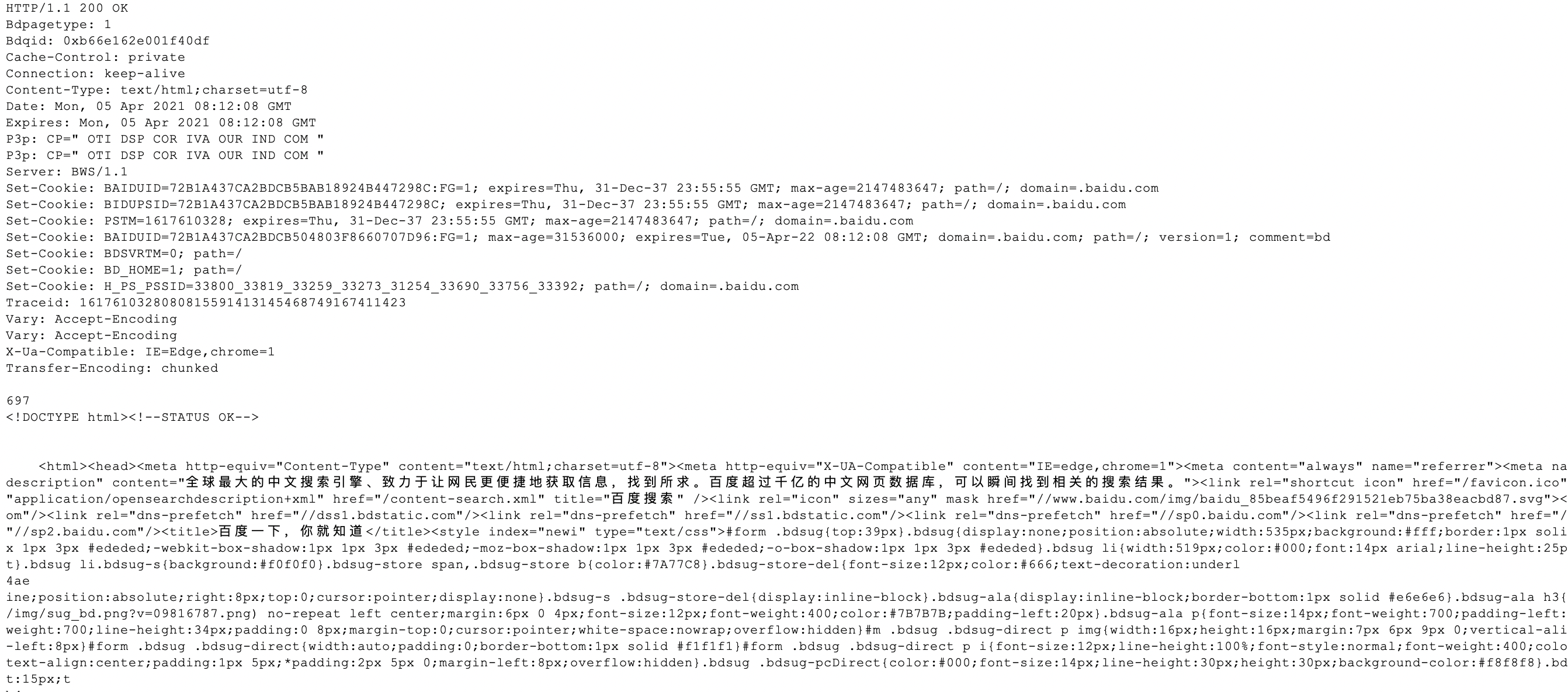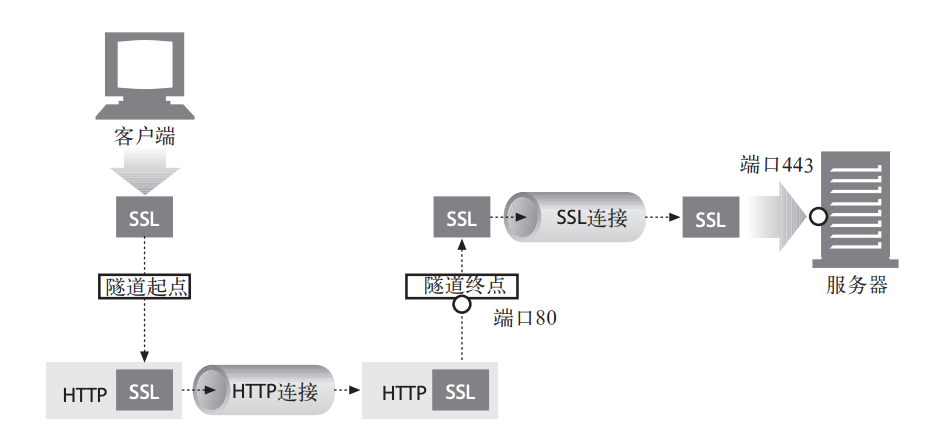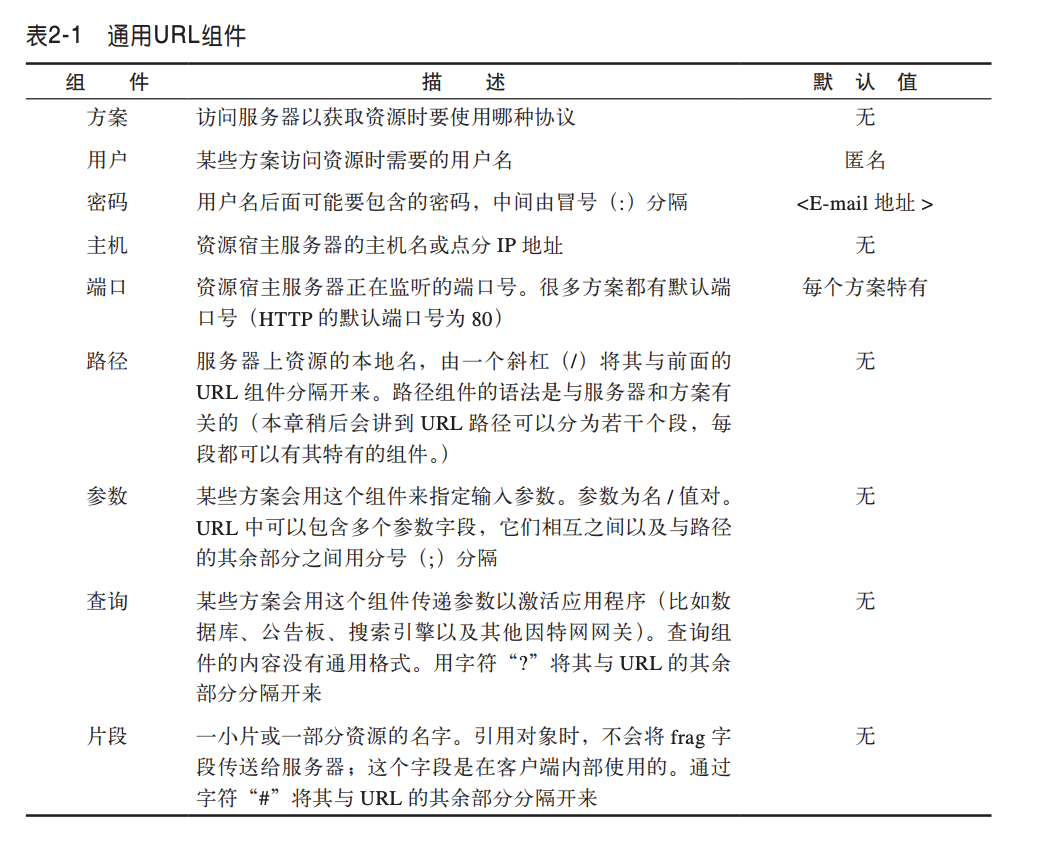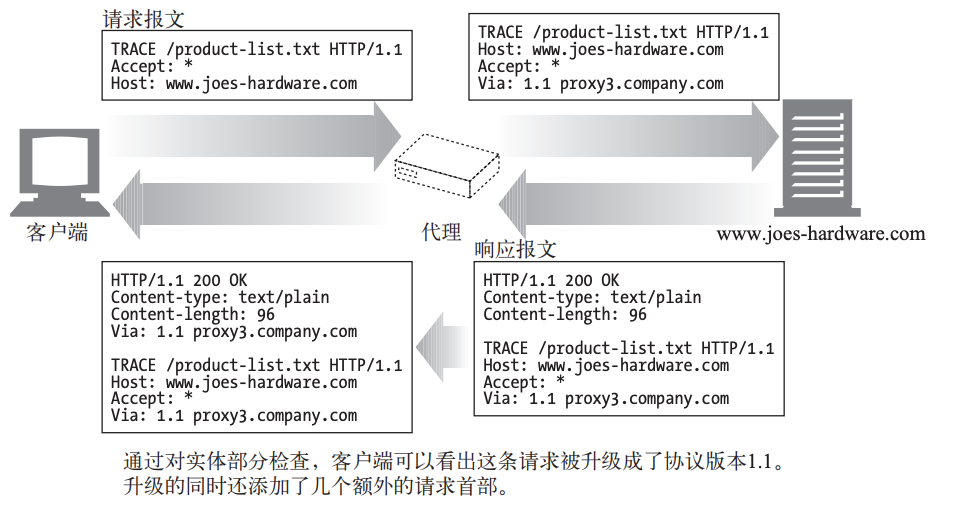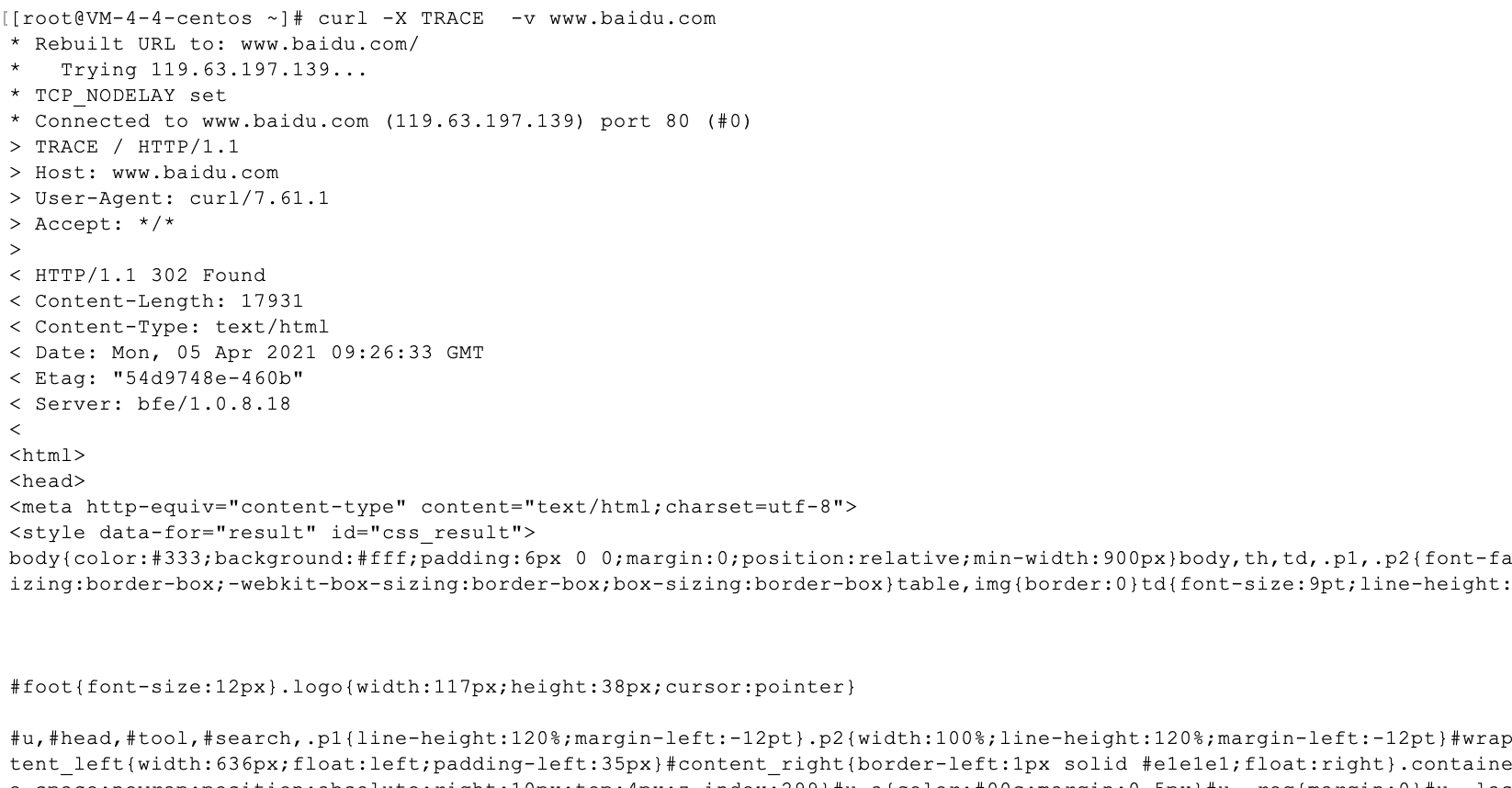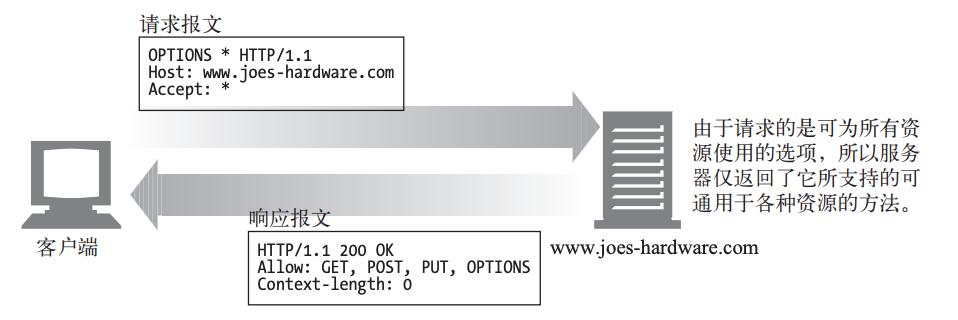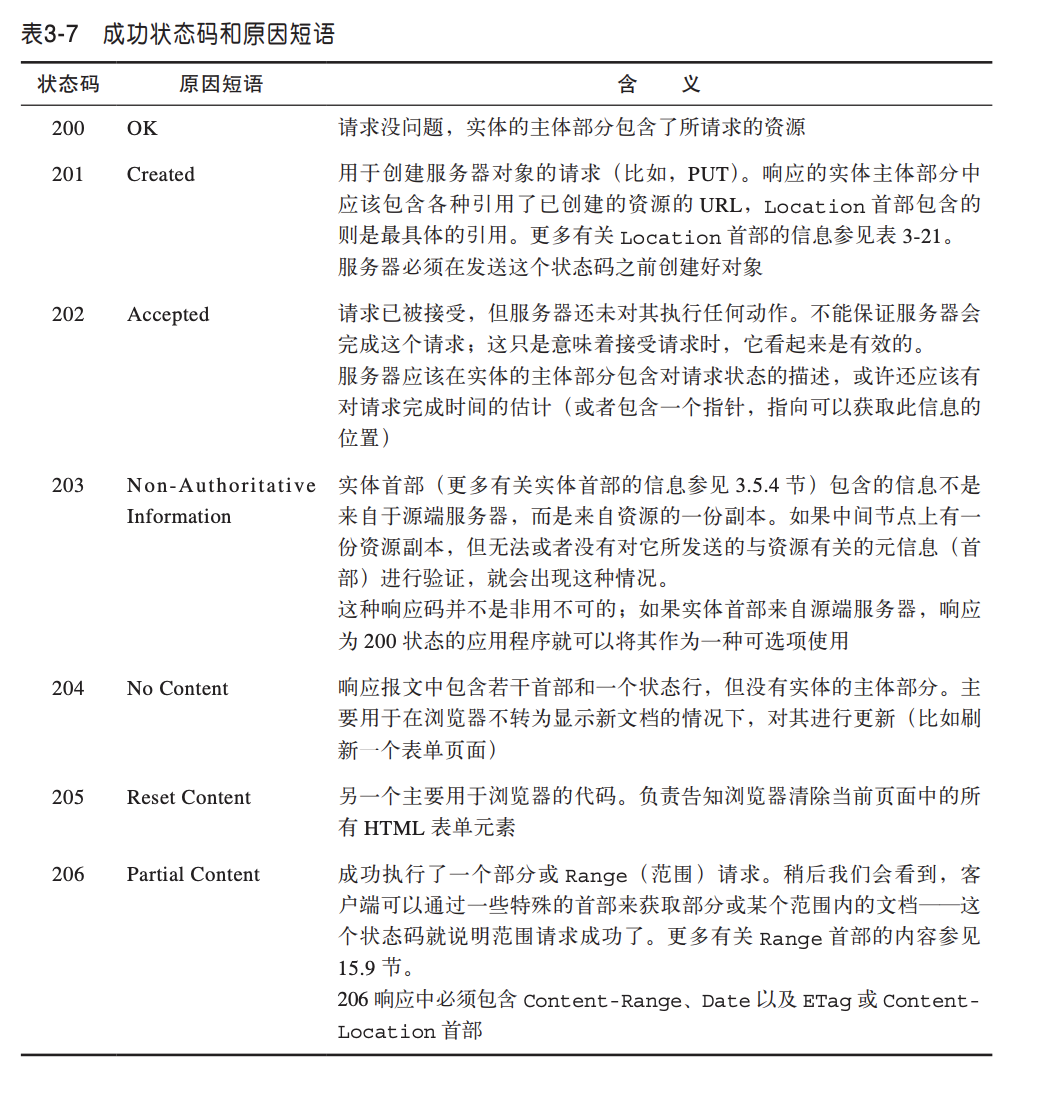HTTP权威指南
第一章: HTTP概述 媒体类型
因特上有数千种不同的数据类型,HTTP仔细地给每种要通过Web传输的对象都打上了名为MIME类型( MIME type)的数据格式标签。最初设计MIME( Multipurpose Internet Mail Extension,多用途因特网邮件扩展)是为了解决在不同的电子邮件系统之间搬移报文时存在的问题。MIME在电子邮件系统中工作得非常好,因此HTTP也采纳了它,用它来描述并标记多媒体内容。
Page: 6
URI
服务器资源名被称为统一资源标识符( Uniform Resource Identifier,URI)。
Page: 7
URI分为两种,URL(统一资源定位符)和URN(统一资源名)
下面是一个URL例子
URN是作为特定内容的唯一名称使用的,与目前的资源所在地无关。使用这些与位置无关的URN,就可以将资源四处搬移。通过URN,还可以用同一个名字通过多种网络访问协议来访问资源。例如我们可以访问RFC 2141
事务
一个HTTP事务由一条(从客户端发往服务器的)请求命令和一个(从服务器发回客户端的)响应结果组成。
Page: 7
方法 包含 GET, PUT, DELETE, POST, HEAD
状态码
每条HTP响应报文返回时都会携帯一个状态码。状态码是一个三位数字的代码告知客户端请求是否成功,或者是否需要采取其他动作。
Page: 8
报文
HTTP报文是由一行一行的简单字符串组成的。HTTP报文都是纯文本,不是二进制代码,所以人们可以很方便地对其进行读写。
有些程序员会抱怨HTTP的语法解析太困难了,这项工作需要很多技巧,而且很容易出错,尤其是在设计高速软件的时候更是如此。二进制格式或更严格的文本格式可能更容易处理,但大多数HTTP程序员都很欣赏HTTP的可扩展性以及可调试性
Page: 9
HTTP报文包括以下三个部分
起始行:报文的第一行就是起始行,在请求报文中用来说明要做些什么,在响应报文中说明出现了什么情况
首部字段:起始行后面有零个或多个首部字段。毎个首部字段都包含一个名字一个值,为了便于解析,两者之间用冒号(:)来分隔。首部以一个空行结束,添加一个首部字段和添加新行一样简单。
主体:空行之后就是可选的报文主体了,其中包含了所有类型的数据。请求主体中包括了要发送给Web服务器的数据;响应主体中装教了要返回给客户端的数据。起始行和首部都是文本形式且都是结构化的,而主体则不同,主体中可以包含任意的二进制数据(比如图片、视频、音轨、软件程序)。当然,主体中也可以包含文本。
想看看HTTP报文吗?下面就是一个HTTP报文。学会指令CURL
1 2 3 4 5 6 7 8 9 10 11 12 13 14 15 16 17 18 19 20 21 22 23 24 25 26 [root@VM-4-4-centos ~]# curl -v www.baidu.com * Rebuilt URL to: www.baidu.com/ * Trying 119.63.197.139... * TCP_NODELAY set * Connected to www.baidu.com (119.63.197.139) port 80 (#0) > GET / HTTP/1.1 > Host: www.baidu.com > User-Agent: curl/7.61.1 > Accept: */* > < HTTP/1.1 200 OK < Accept-Ranges: bytes < Cache-Control: private, no-cache, no-store, proxy-revalidate, no-transform < Connection: keep-alive < Content-Length: 2381 < Content-Type: text/html < Date: Mon, 05 Apr 2021 08:06:24 GMT < Etag: "588604ec-94d" < Last-Modified: Mon, 23 Jan 2017 13:28:12 GMT < Pragma: no-cache < Server: bfe/1.0.8.18 < Set-Cookie: BDORZ=27315; max-age=86400; domain=.baidu.com; path=/ < <!DOCTYPE html> <!--STATUS OK--><html> <head><meta http-equiv=content-type content=text/html;charset=utf-8><meta http-equiv=X-UA-Compatible content=IE=Edge><meta content=always name=referrer><link rel=stylesheet type=text/css href=http://s1.bdstatic.com/r/www/cache/bdorz/baidu.min.css><title>百度一下,你就知道</title></head> <body link=#0000cc> <div id=wrapper> <div id=head> <div class=head_wrapper> <div class=s_form> <div class=s_form_wrapper> <div id=lg> <img hidefocus=true src=//www.baidu.com/img/bd_logo1.png width=270 height=129> </div> <form id=form name=f action=//www.baidu.com/s class=fm> <input type=hidden name=bdorz_come value=1> <input type=hidden name=ie value=utf-8> <input type=hidden name=f value=8> <input type=hidden name=rsv_bp value=1> <input type=hidden name=rsv_idx value=1> <input type=hidden name=tn value=baidu><span class="bg s_ipt_wr"><input id=kw name=wd class=s_ipt value maxlength=255 autocomplete=off autofocus></span><span class="bg s_btn_wr"><input type=submit id=su value=百度一下 class="bg s_btn"></span> </form> </div> </div> <div id=u1> <a href=http://news.baidu.com name=tj_trnews class=mnav>新闻</a> <a href=http://www.hao123.com name=tj_trhao123 class=mnav>hao123</a> <a href=http://map.baidu.com name=tj_trmap class=mnav>地图</a> <a href=http://v.baidu.com name=tj_trvideo class=mnav>视频</a> <a href=http://tieba.baidu.com name=tj_trtieba class=mnav>贴吧</a> <noscript> <a href=http://www.baidu.com/bdorz/login.gif?login&tpl=mn&u=http%3A%2F%2Fwww.baidu.com%2f%3fbdorz_come%3d1 name=tj_login class=lb>登录</a> </noscript> <script>document.write('<a href="http://www.baidu.com/bdorz/login.gif?login&tpl=mn&u='+ encodeURIComponent(window.location.href+ (window.location.search === "" ? "?" : "&")+ "bdorz_come=1")+ '" name="tj_login" class="lb">登录</a>');</script> <a href=//www.baidu.com/more/ name=tj_briicon class=bri style="display: block;">更多产品</a> </div> </div> </div> <div id=ftCon> <div id=ftConw> <p id=lh> <a href=http://home.baidu.com>关于百度</a> <a href=http://ir.baidu.com>About Baidu</a> </p> <p id=cp>©2017 Baidu <a href=http://www.baidu.com/duty/>使用百度前必读</a> <a href=http://jianyi.baidu.com/ class=cp-feedback>意见反馈</a> 京ICP证030173号 <img src=//www.baidu.com/img/gs.gif> </p> </div> </div> </div> </body> </html> * Connection #0 to host www.baidu.com left intact
> 即为我们发送的信息
< 即为我们收到的信息
Telnet伪造 我们来使用telnet伪造一个HTTP请求,按照下面的方案进行输入
1 2 3 4 5 6 7 8 9 [root@VM-4-4-centos ~]# telnet www.baidu.com 80 Trying 119.63.197.139... Connected to www.baidu.com. Escape character is '^]'. GET / HTTP/1.1 HOST: www.baidu.com User-Agent: telnet Accept: */*
然后你就能得到一堆百度的返回
代理是位于服务器和客户端之间的中间体
缓存
网关一般用于协议转换
隧道,这是一个对SSL报文封包的例子
Agent代理,Web浏览器是最常见的代理,除此以外还有网络蜘蛛、web机器人等
第二章 URL与资源
方案 即使用什么协议,必须用字母开头,并用第一个:把URL分割开。
用户名和密码 ftp就是一个需要账号密码的协议,比如
1 2 3 ftp://ftp.prep.ai.mit.edu/pub/gnu ftp://anonymous@ftp.prep.ai.mit.edu/pub/gnu ftp://anonymous:my_passwd@ftp.prep.ai.mit.edu/pub/gnu
第一个例子会默认账号: anonymous, 默认密码: xxx(各浏览器不一致)
第二个例子指定了账号anonymous
第三个例子同时指定了账号和密码,用:分割
主机和端口 http://www.baidu.com:80/path/to?hello=world
主机是www.baidu.com
端口是80
路径 http://www.baidu.com:80/path/to?hello=world
路径是/path/to
参数 参数被字符;分割
ftp://prep.ai.mit.edu/pub/gnu;type=d
参数是type,值为d
http://www.joes-hardware.com/hammers;sale=false/index.html;graphics=true
每一个路径都可以有参数
查询字符串 http://www.baidu.com:80/path/to?hello=world
参数是hello=world
片段 https://fightinggg.github.io/QQZ90O.html#片段
这个片段直接指向了这块区域
第三章 HTTP报文 安全方法 GET和HEAD就是安全的方法,他们不用产生动作
GET 通常是请求服务器发送某个资源
HEAD
HEAD方法与GET方法的行为很类似,但服务器在响应中只返回首部。不会返回实体的主体部分。这就允许客户端在未获取实际资源的情况下,对资源的首部进行检査。使用HEAD,可以:
服务器开发者必须确保返回的首部与GET请求所返回的首部完全相同。遵循 HTTP/.1规范,就必须实现HEAD方法。
Page: 57
PUT PUT是向服务器写入某资源
POST POST向服务器发送数据
TRACE 这是一个诊断请求
TRACE请求会在目的服务器端发起一个“环回”诊断。行程最后一站的服务器会弹回一条 TRACE响应,并在响应主体中携带它收到的原始请求报文。这样客户端就可以査看在所有中间HTTP应用程序组成的请求/响应链上,原始报文是否,以及如何被毁坏或修改过.
这是一个TRACE的例子,看来百度不太给劲啊。
github也是这样
1 2 3 4 5 6 7 8 9 10 11 12 13 14 15 [root@VM-4-4-centos ~]# curl -X TRACE -v www.github.com * Rebuilt URL to: www.github.com/ * Trying 52.74.223.119... * TCP_NODELAY set * Connected to www.github.com (52.74.223.119) port 80 (#0) > TRACE / HTTP/1.1 > Host: www.github.com > User-Agent: curl/7.61.1 > Accept: */* > < HTTP/1.1 301 Moved Permanently < Content-Length: 0 < Location: https://www.github.com/ < * Connection #0 to host www.github.com left intact
OPTIONS
OPTIONS 方法请求 Web 服务器告知其支持的各种功能。可以询问服务器通常支持 哪些方法,或者对某些特殊资源支持哪些方法。(有些服务器可能只支持对一些特殊 类型的对象使用特定的操作)。
百度还是一如即往
1 2 3 4 5 6 7 8 9 10 11 12 13 [root@VM-4-4-centos ~]# telnet www.baidu.com 80 Trying 119.63.197.139... Connected to www.baidu.com. Escape character is '^]'. OPTIONS * HTTP/1.1 Host: www.baidu.com Accept: * HTTP/1.1 200 OK Content-Length: 0 Content-Type: text/plain Date: Mon, 05 Apr 2021 09:35:09 GMT Server: Apache
1 2 3 4 5 6 7 8 9 10 11 [root@VM-4-4-centos ~]# telnet www.github.com 80 Trying 13.229.188.59... Connected to www.github.com. Escape character is '^]'. OPTIONS * HTTP/1.1 Host: www.github.com Accept: * HTTP/1.1 301 Moved Permanently Content-Length: 0 Location: https://www.github.com/
DELETE 删除某资源
状态码


